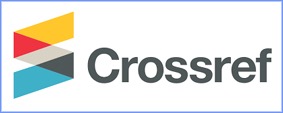Tindak Verbal Abuse dalam Permainan mobile Legend di Indonesia: Kajian Sosiolinguistik
DOI:
https://doi.org/10.29240/estetik.v2i2.1055Keywords:
Keywords, Verbal abuse, sociolinguisticsAbstract
Mobile Legend is a game that is widely played by various groups from young to old. In communication, this game has provided a forum for communication in the form of chat or voice. But there are many found misuse of this communication space. Like players who often throw harsh words in the form of taunts / verbal swearings. The curses made by these fellow mobile legend players are of various types. The existence of this research is intended to find out how many types of verbal swearings are often spoken by mobile legend players in Indonesia. This study uses descriptive qualitative method, namely by collecting, analyzing and identifying verbal swear data. From this study found various types of verbal swearing which are classified into seven based on (1) animals, (2) professions, (3) limbs, (4) traits, (5) circumstances, (6) verbs, and (7) words object. The cursing cast by the player resulted in a decrease in the player's confidence in playing the Mobile Legend game well and caused the anger of the player who was hurled by hurtful swearings.
Downloads
References
Aan Prabowo, Heriyanto. 2013. “Analisis Pemanfaatan Buku Elektronik (E-Book) Oleh Pemustaka Di Perpustakaan SMA Negeri 1 Semarang.” Jurnal Ilmu Perpustakaan 2 (2): 1–9. http://ejournal-s1.undip.ac.id/index.php/jip%5C.Analisis
Apriani, Sarah. dkk. 2018. “Pengunaan Bahasa Indonesia Pada Diskusi Siswa SMA Negeri 4 Surakarta: Kajian Dengan Prinsip Kerja Sama Grice Dan Relevansinya Sebagai Bahan Ajar Keteramian Berbicara. Universitas Sebelas Maret” 6 (1): 281–301.
Damayanti, Wahyu. 2017. “Makian Dalam Bahasa Melayu Dialek Selimbau Kapuas Hulu” 45 (1): 32–46.
Fariz, Achmad. 2017. “Gamers Dalam Permainan Game Online Dota 2 Di Warung Internet Tumang Game Online Kabupaten Sukoharjo,” no. 16.
Huraerah, Abu. 2012. Kekerasan Terhadap Anak. Bandung: Nuansa Cendikia.
Jannah, Almaidatul, Wahyu Widayati, and Kusmiyati. 2017. “Bentuk Dan Makna Kata Makian Di Terminal Purabaya Surabaya Dalam Kajian Sosiolinguistik” 4 (2): 43–59.
Kurniasih, Dwi. 2017. “Satuan Ekspresi Pada Kemasan Botol AQUA.” Jurnal Bahasa Lingua Scientia 9 (2): 319–46.
Masykur, Purami Sarah Sita. 1994. “Bentuk Dan Fungsi Umpatan Oleh Siswa SMA Negeri 2 Manaje, Sulawesi Barat Dalam Situasi Non Formal” 2 (2): 63–75.
Muktiono, Dadung Ibnu, Dedi Irwanto, Muhammad Santun, Dhanang Respati Puguh, et al. 2013. “Apakah Pisuhan Selalu Bermakna Negatif ?: Fungsi Pisuhan Dalam Masyarakat Arek Dan Masyarakat Mataraman ( Are Swear Words Always Perceived Negatively ?: The Function of Swearing in Arek Society and Mataraman Society )” 13 (2): 165.
Oktaviani, Feny. 2018. “Analisis Kesalahan Berbahasa Indonesia Pada Karangan Eksposisi Siswa Kelas X Mipa Universitas Sebelas Maret Surel :” 6 (3): 94–109.
Putri, Annora Mentari, Agus Santoso. 2012. “Persepsi Orang Tua Tentang Kekerasan Verbal Pada Anak.” Jurnal Nursing Studies 1: 22–29.
Triadi, Rai Bagus. 2017. “Pegunaan Makian Bahasa Indonesia Pada Media Sosial (Kajian Sosiolinguistik)” 5: 1–26.
Winiasih, Tri. 2010. Kajian Sosiolinguistik Program Pascasarjana. Surakarta: Universitas Sebelas Maret.
Downloads
Published
How to Cite
Issue
Section
Citation Check
License
Authors who publish with ESTETIK : Jurnal Bahasa Indonesia agree to the following terms:
- Authors retain copyright and grant the journal right of first publication with the work simultaneously licensed under a Creative Commons Attribution-NonCommercial-ShareAlike 4.0 International License (CC BY-NC-SA 4.0) that allows others to share the work with an acknowledgment of the work's authorship and initial publication in this journal.
- Authors are able to enter into separate, additional contractual arrangements for the non-exclusive distribution of the journal's published version of the work (e.g., post it to an institutional repository or publish it in a book), with an acknowledgment of its initial publication in this journal.
- Authors are permitted and encouraged to post their work online (e.g., in institutional repositories or on their website) prior to and during the submission process, as it can lead to productive exchanges, as well as earlier and greater citation of published work (See The Effect of Open Access).






